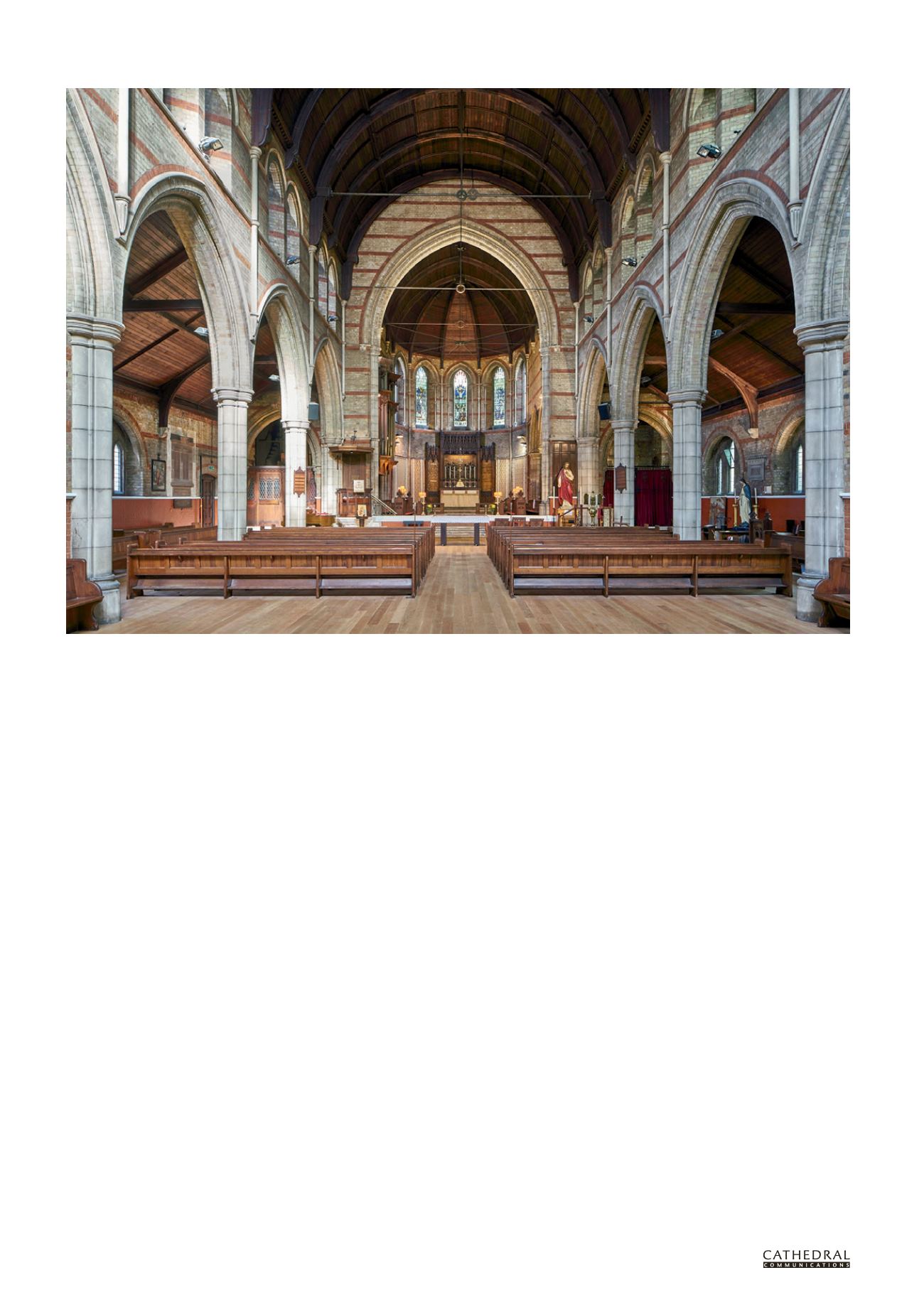

10
BCD SPECIAL REPORT ON
HISTORIC CHURCHES
24
TH ANNUAL EDITION
that the new community rooms should
be constructed in brickwork to match the
surrounding walls, rather than in painted
plasterboard like the 1968 meeting room
walls. Although a lightweight timber
frame and plasterboard may seem the
more reversible of the two options,
steel beams would have been needed
to support the upper community room
floor structure. By progressing the design
further with structural input from Stand
Consulting Engineers, it was agreed
that the proposed brick masonry infills
would be a more ‘honest’ intervention,
and would form a more permanent part
of the building’s story as a place which
evolves to meet the needs of the parish.
After presenting this approach to
the Victorian Society, outlining how the
masonry designs would effectively be as
reversible as a timber frame design, the
society confirmed in mid-summer 2015
that it would not object to the granting of
a faculty. The senior conservation adviser
(churches) at the Victorian Society
expressed the view that:
By being designed with
permanence in mind, the proposed
subdivisions will benefit from a
quality of design and materials
that will actually make them less
harmful than similar subdivisions
in studwork which might be just as
‘permanent’ in practice.
The proposals were duly granted a faculty
by the Diocese of London in July 2015
and a tender for the works was issued to
main contractors the following month.
By January 2016 the project had started
on site, with the nearby Emmanuel
Church of England School used for
services as the works progressed.
COMPLETION
The project achieved practical
completion in November 2016 and was
dedicated and officially opened the same
month. The completed works were so
seamless with the existing building that
during the opening ceremony many
guests unfamiliar with the previous
internal layout had to ask what the works
had entailed.
From its earliest beginnings
Emmanuel Church has been a place
developing to reflect the ever-
changing needs of its parish. From the
construction of a larger church for an
increasing congregation in 1898, to the
removal of pews and creation of the 1968
meeting room, to the new community
spaces completed in 2016, the church
has continuously responded to changing
needs and circumstances.
Financing at Emmanuel Church, as
with many large historic structures, has
been a factor throughout the history
of the building’s development, with
elements being completed as and when
resources were available. Although
this project took close to a decade
from inception to completion, the
resulting new community spaces and
ancillary areas will suit a wide range
of uses, where all the previous users
of the church can be accommodated
and many more can be welcomed. The
project will provide income for future
maintenance work and has allowed the
church to remain a cultural centre for
the West Hampstead community.
NEIL McLAUGHLIN
is an associate at
Donald Insall Associates (see page 11).
Founded in 1958 by Sir Donald Insall, DIA
is an architectural practice with close to
60 years’ experience in the conservation
of listed buildings and the sensitive
interventions often required to ensure their
future usability.
The nave and chancel of Emmanuel Church, West Hampstead with its new oak floor (Photo: Thomas Erskine)


















